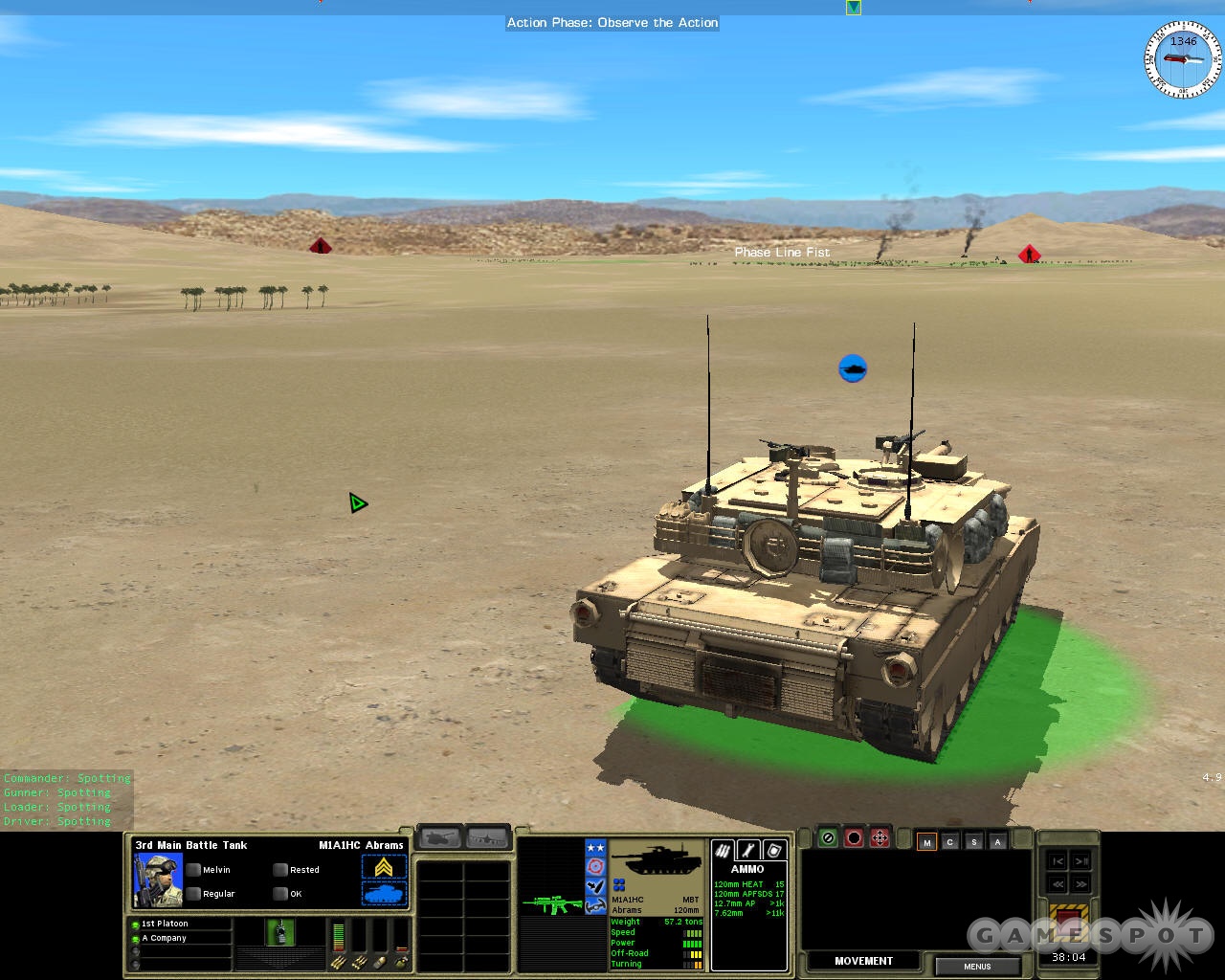Combat Mission: Shock Force Hands-On
The Combat Mission franchise ditches its World War II roots and sets its sights on a hypothetical war with Syria using modern weapons and tactics.
The Combat Mission games have done a lot to raise the bar for wargames on the PC, thanks to their excellent simulation mechanics and approach to the genre. While most wargames tend to be 2D--acting as computerized versions of board games--the Combat Mission games used to use a (relatively) crude 3D engine to let you see the battle evolve in a realistic manner. Of course, the attention to statistical detail that is the hallmark of serious wargames is also there. With Combat Mission: Shock Force, the series is looking to leap ahead to a modern-day setting and updated technology.

The hypothetical scenario at the heart of Shock Force could almost have been ripped from the headlines. After radioactive "dirty bombs" explode in Western cities, Syria is tied to the act and the US and other nations retaliate. You play from the perspective of the US Army forces, as you can command elements of Task Force Hawk, the invasion force. Task Force Hawk consists of a Stryker Brigade Combat Team as well as supporting armor and mechanized infantry units.
Shock Force will ship with two campaigns, along with stand-alone missions, quick battle functionality, a scenario editor, and multiplayer. While the campaigns are fought from the US perspective, the other modes will let you play from the Syrian perspective, if you choose.
Like its predecessors, Shock Force isn't a large-scale wargame where you'll command hundreds of units over a vast distance. This is very much a tactical-level wargame, focused on platoon and company-level combat. Battles are designed to last 30 minutes in real time, and they generally deal with very narrow objectives. The battles that we played involved conducting a patrol through a very dangerous neighborhood with a platoon (four, in total) of Stryker combat vehicles and their mounted infantry, as well as commanding two platoons of M1 tanks in a mission to locate and destroy armored forces.
There are two ways to play Shock Force: real time and turn based. The former is just how it sounds, as the game continues to play while you issue orders. The turn-based mode pauses the game at one-minute intervals, which lets you issue commands to your units. However, once you've inputted all of your moves, the game unfolds in real time for one minute, letting you watch the consequences of your decisions. After the minute has elapsed, the game pauses again. You can watch a replay of the action and review what went on, or you can skip ahead to the commands section and modify existing orders or issue new ones based on the situation on the ground.
The turn-based mode is the easiest to pick up and learn since it pauses the action, so you shouldn't get overwhelmed by the pressures of combat. You can issue movement and fire orders to individual vehicles or formations of vehicles (which helps cut down on the micromanagement), as well as call out special orders, such as ordering infantry to mount or dismount, deploy heavy weapons, and more. The only hard part is that the camera controls take a while to get used to, as they go against the grain of most strategy games.

If you played the previous Combat Mission games, Shock Force may be a surprise. There's a speed and lethality to modern combat that's a big change from World War II-era weapons and tactics. For example, M1 tanks move a lot faster than their World War II counterparts, can shoot from a longer distance, and are accurate while on the move. Meanwhile, antitank missiles can level the playing field for infantry, particularly in built-up areas such as towns and cities.
While Shock Force does look better than its predecessors, it's still got a fairly rudimentary graphics engine compared to more mainstream games. The intricate detail on vehicles is very impressive, as you can see hatches open and close and infantrymen stick their heads up out of a hatch or scramble off of an armored personnel carrier, but the rest of the battlefield doesn't look as nice in the early version of the game we played. Hopefully, the terrain will be cleaned up and will look better in the final game.
In any case, Shock Force appears to be a very accurate model of modern-day military operations, and that's more important to wargame fans. And with the shift away from World War II, the series may pick up gamers interested in modern warfare. Combat Mission: Shock Force ships next month, so we'll find out soon.
Got a news tip or want to contact us directly? Email news@gamespot.com
Join the conversation